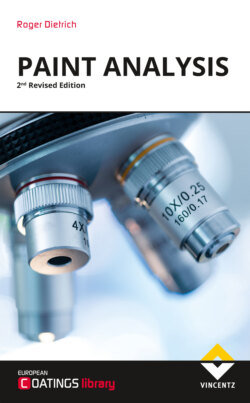Читать книгу Paint Analysis - Roger Dietrich - Страница 41
На сайте Литреса книга снята с продажи.
3.5.3 Selecting the wrong amount of samples
ОглавлениеAs shown in Chapter 3.2, Part II it is a challenge to decide how many samples are at least necessary out of a population of parts to meet the requirements of the design of experiment. This is true for targeted sampling as well as for random sampling. The minimum number of random samples for a given probability of success has been calculated in case study 1 of Chapter 3.2, Part II. It sometimes exceeds the number of samples that can be collected under practical considerations. Taking as an example a paint defect “outbrake” of different shapes and distribution on a coated steel component. The first inspection did not verify unambiguously, if the failure is a speck or a paint bubble or wetting defect. Some parts exhibit one spot, some show up to ten spots. At the beginning of the analytical process when the sampling takes place the number of different defect types, the number of defects of each defect type, and the percentage of affected components is unknown. So, a calculation based on stochastic rules is difficult and might lead to an unrealistic high number of necessary samples. But, for sure, under conditions like these taking out one failed part and analysing one defect on the randomly selected component is not an option.
